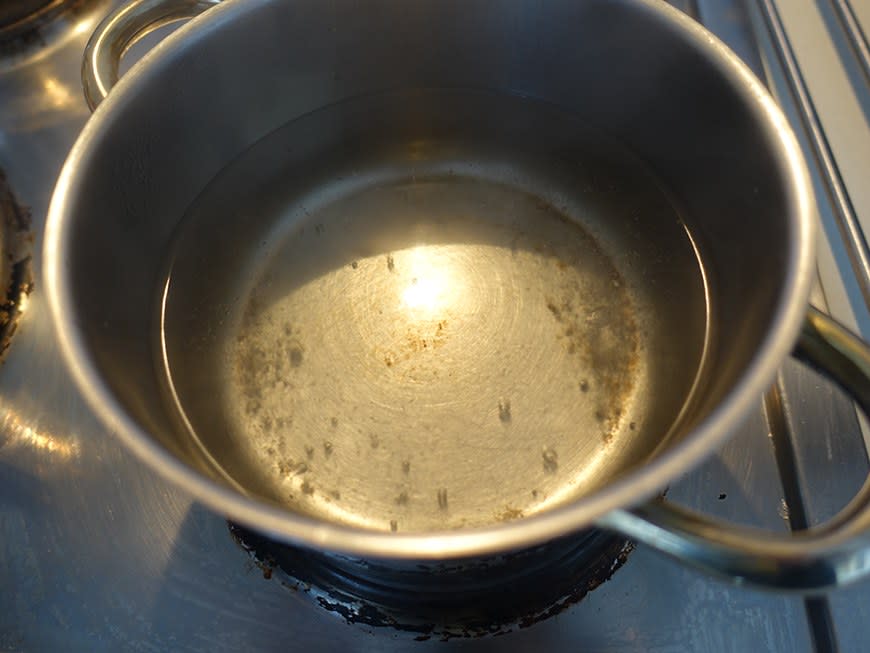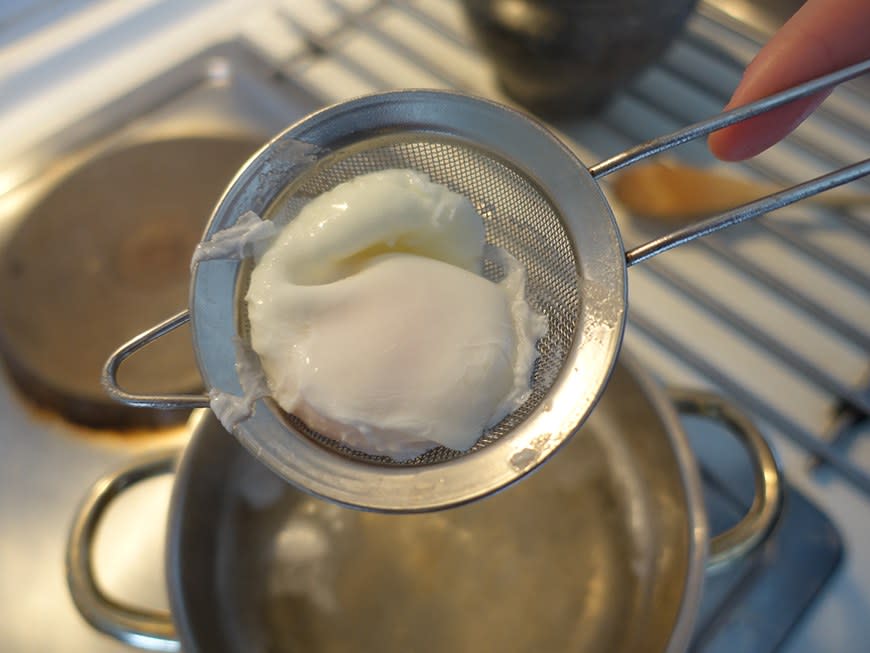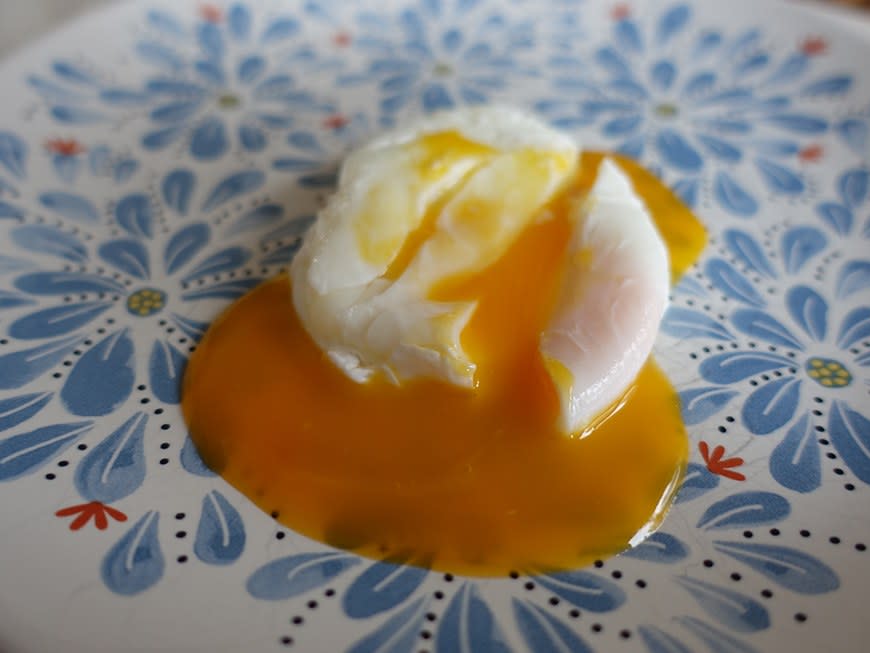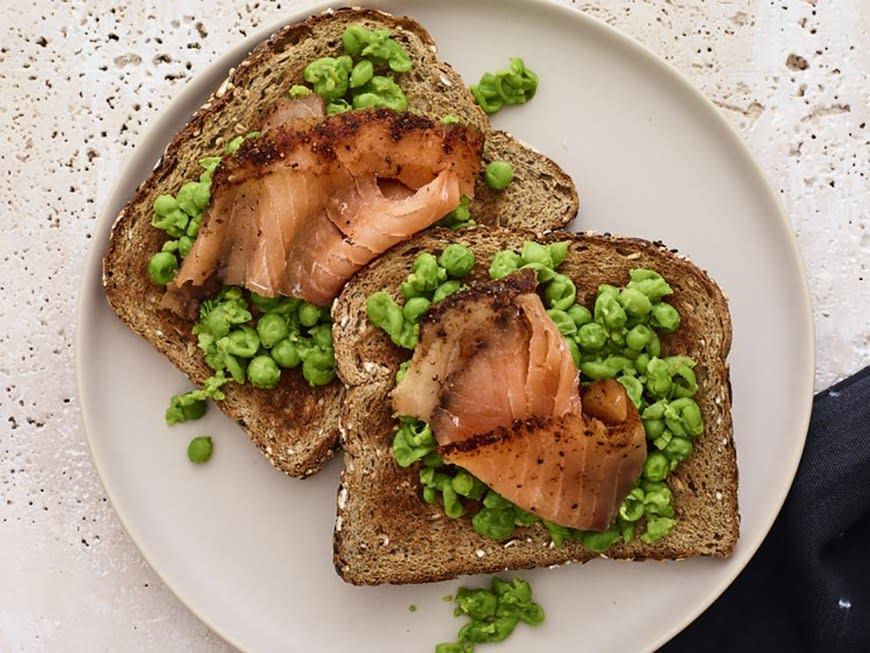How to Poach an Egg Like a Pro
There are a lot of easy ways to cook eggs, but poaching is not usually considered one of them. Dropping a raw egg into a pot of simmering water is risky business, and if you make just one wrong move, the whole thing may scramble right before your very eyes.
It took me years to finally nail egg poaching because there's so much misinformation out there. I see and try so-called egg poaching hacks all the time, but they just end up making it harder. For example, some say you can do it in the microwave, but this tends to yield rubbery results. Others say you need a fancy tool that's specially made for the job, but experts say that's just a waste of money. And you've probably heard that you're supposed to make a whirlpool with the water in the pot before you add the egg, but this will only make things worse.
In reality, a few ingredients, a couple of tools, and a handful of basic skills are all you actually need to perfectly poach an egg. According to Nick Korbee, executive chef of Egg Shop in New York City and author of Egg Shop: The Cookbook, the best way to make a poached egg really is the simplest way.
I asked Korbee to break down everything you need to know to do it yourself—and tried out his tips just to be sure they work. Spoiler alert: They do. (Not that I doubted him anyway.)
First, let's talk about what poaching means.
Poaching is the act of cooking something in hot liquid. You can do it with just about any food, including fish, chicken, and vegetables, and the liquid you use doesn't need to be water. Korbee tells SELF that he likes to poach eggs in lemony curry broths and even in borscht (a beet soup from Eastern Europe), but you can experiment with whatever you like.
If you're going to poach an egg the traditional way, here are the tools you'll need.
Korbee says you'll need a saucepot between 4 and 6 inches deep and a slotted spoon. He says you absolutely do not need a poaching pod, egg drop cup, or any other device that's been specifically designed for poaching eggs. Instead, he says you should try to drop the egg straight from the shell into the pot of water rather than using a tool.
When I was poaching eggs for this story, I used a ladle to gently spoon one into the pot and it turned out fine. I get a bit nervous at the thought of accidentally touching hot water, so I like to keep my distance by using a tool like a ladle or a small bowl when poaching eggs. If you feel like you have enough control to simply drop the egg from its shell, go for it. But if you'd rather not risk a burn, do what I do. Either way, you don't need to spend money on a single-purpose egg-poaching gadget.
Follow these steps:
1. Add a bit of acid and salt to a pot of water.
Fill the pot about three quarters full with water. Then add a drop or two of acidic liquid. "A little acid helps coagulate the egg whites and encourages them to set rather than disperse," Korbee explains. "Salt is also helpful as a seasoning." As for the best acidic ingredient to use, he's a fan of white wine vinegar and lemon juice. Since I didn't have either, I used a bit of apple cider vinegar and it got the job done. Really, you can use whatever you have on hand, because you're adding such a small amount that it won't affect the flavor.
2. Bring the water to a simmer.

This is the most common spot where people mess up poaching eggs, because simmering water is a bit more complicated than you might realize. Korbee says that traditionally, poaching occurs in a liquid that's 156 to 175 degrees, though you can go up to 180 degrees and be fine. Stay in that range and your water is simmering. Any higher will leave you with an egg that's accidentally scrambled, or overly tough, or both.
But you don't need a thermometer to know if you're at the right temp. You can simply tell if the water is simmering by looking at it—bubbles the size of fish eggs (gross example, but hear me out) will begin forming at the bottom of the pot. One or two bubbles may rise to the surface every few seconds, but overall, the surface shouldn't bubble.
3. Drop the egg into the pot as close to the surface of the water as you can.
If you drop an egg into a pot of water from high up, it's going to scramble. For ultimate success, Korbee says you'll need to drop the egg into the water as close to the surface as possible. That's why he prefers to do it straight from the shell. However, as I said, you can achieve the same results by gently spooning it in with a ladle or pouring it from a small bowl.
Once the egg is submerged, don't stir it or touch it immediately. Let it sit until it begins to rise. That's when you can start checking to see if it's finished.
4. Let the egg cook for about two minutes.

Korbee says that while it takes about two minutes to poach an egg, he likes to check the egg throughout the process for doneness. "I like to engage with my food" he explains. "I'll lift the eggs gently with a slotted spoon and jiggle them around a little to check the firmness of the yolk." He says you'll know it's ready when the white is fully set but the yolk is still completely liquid. "Just don't be afraid to poke it, prod it, jiggle it, or wiggle it," he adds, "the only mistake you can make is walking away."

Serve your perfectly poached egg in these recipes.
Prosciutto-Wrapped Melon Over Lemony Arugula

I prefer to use a poached egg over a hard-boiled one in this salad because the runny yolk adds a delicious, creamy texture. Get the recipe here.
Curried Chickpeas and Tomato

Any recipe that calls for a fried egg can just as easily be made with a poached one, like this spicy breakfast. Get the recipe here.
Smashed Pea and Smoked Salmon Toast

A perfectly poached egg on toast will always get you likes on the 'gram. Get the recipe here.

